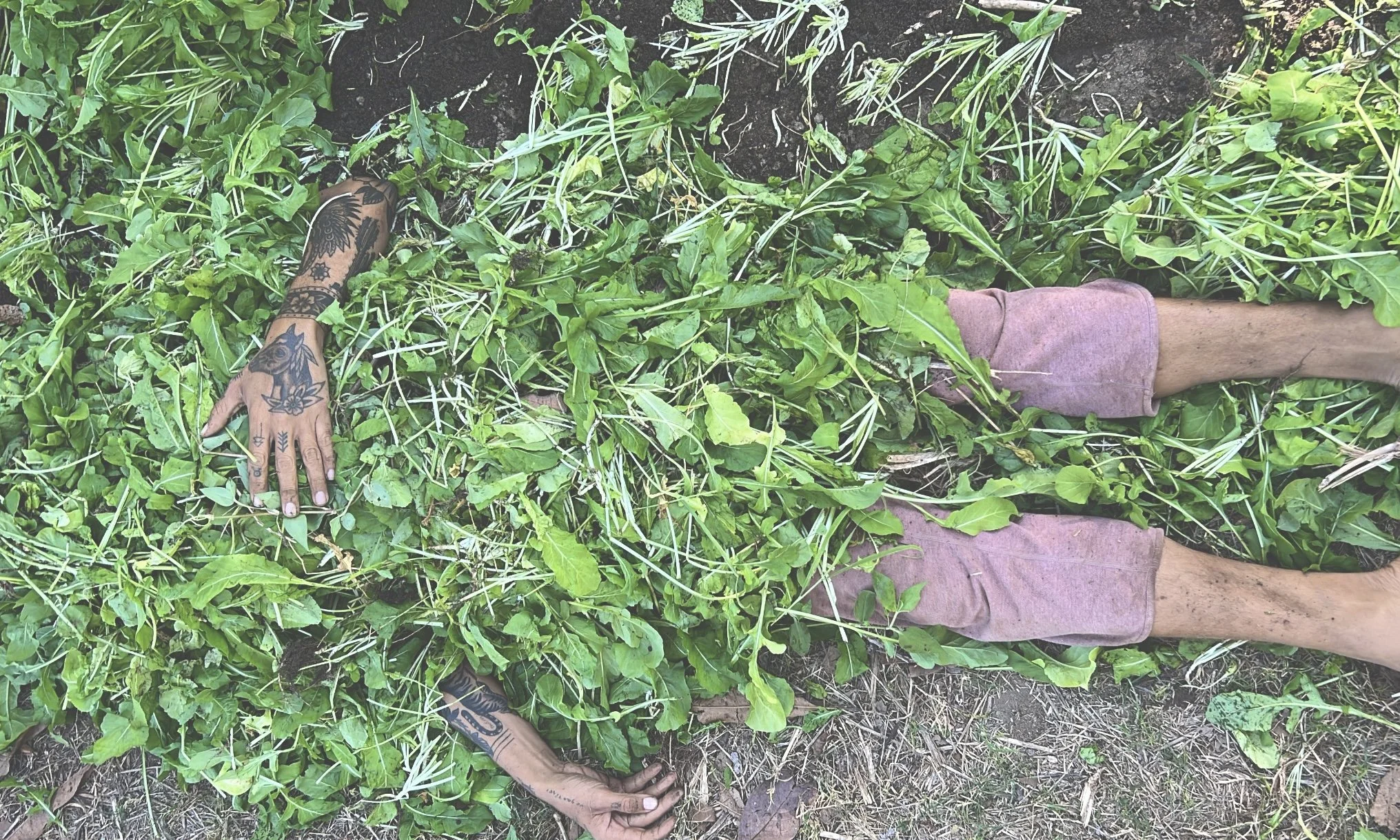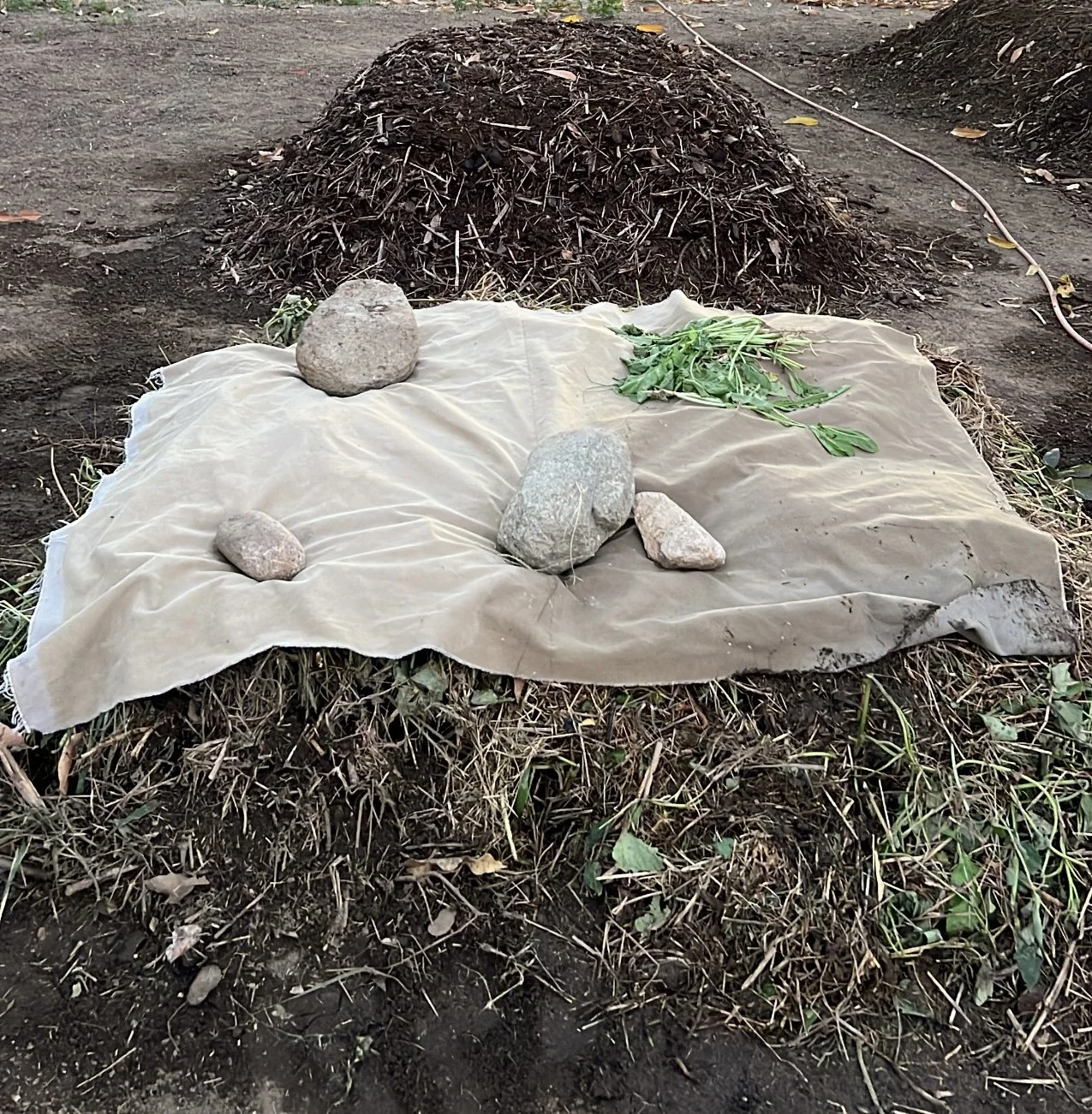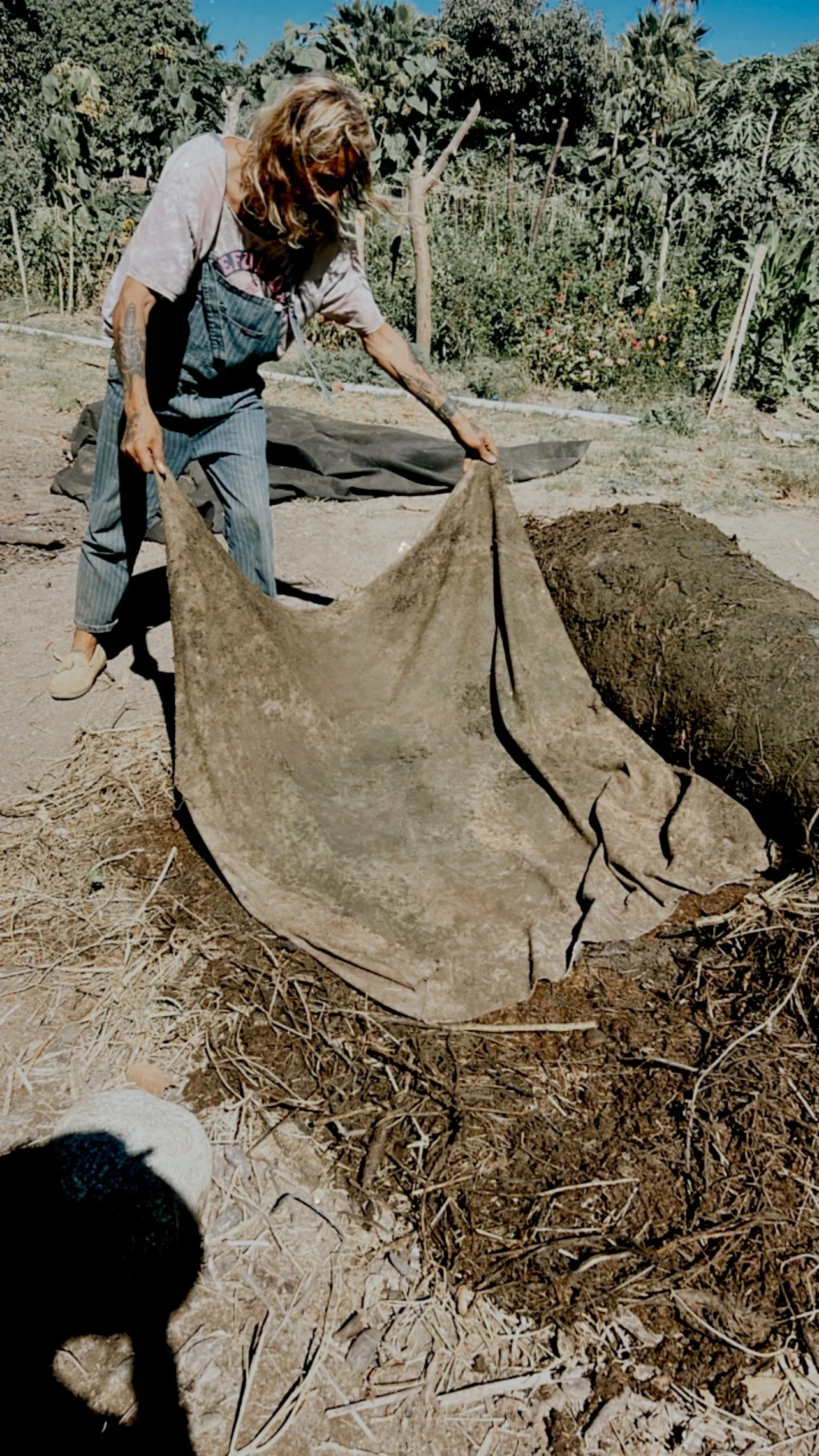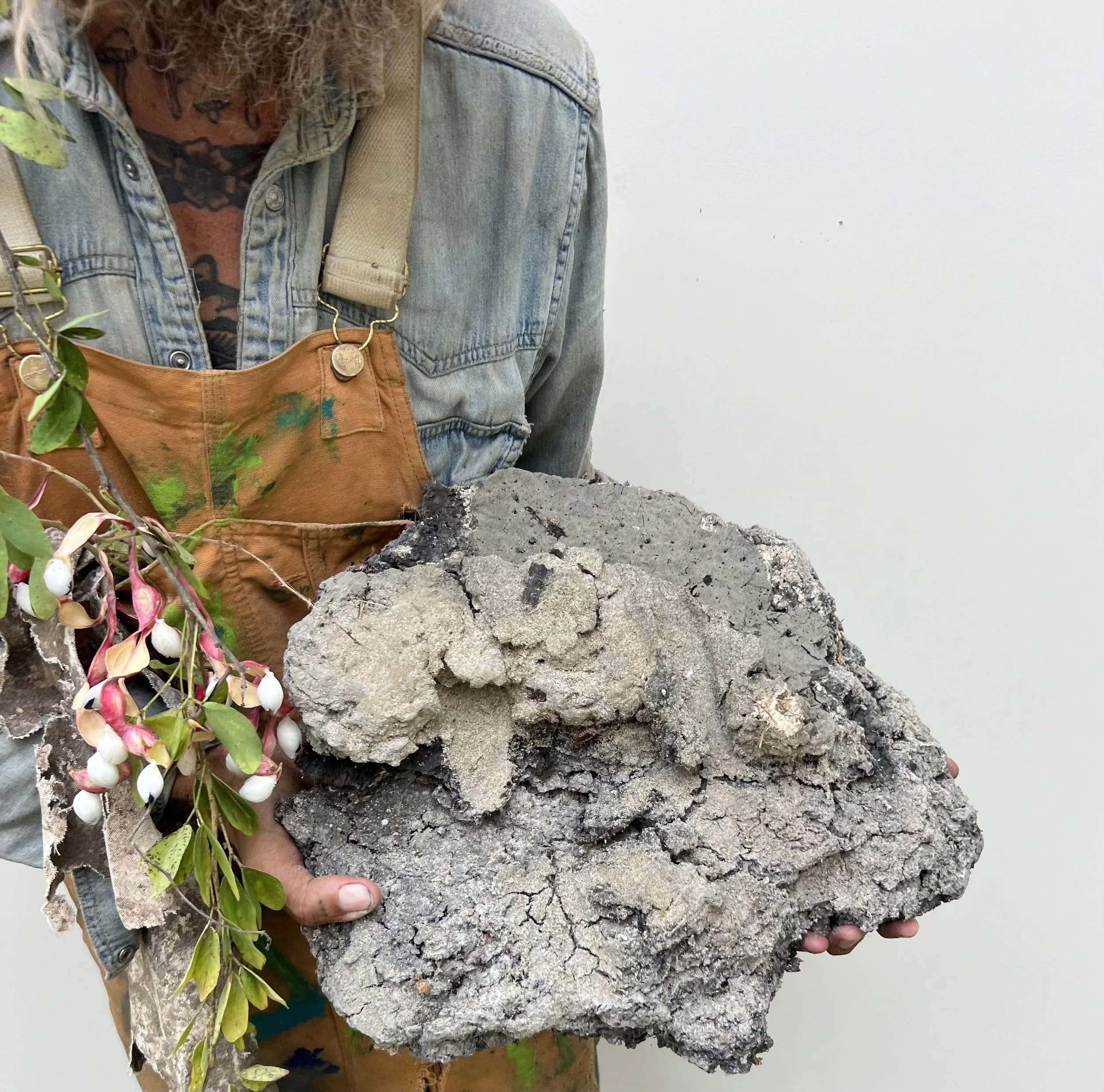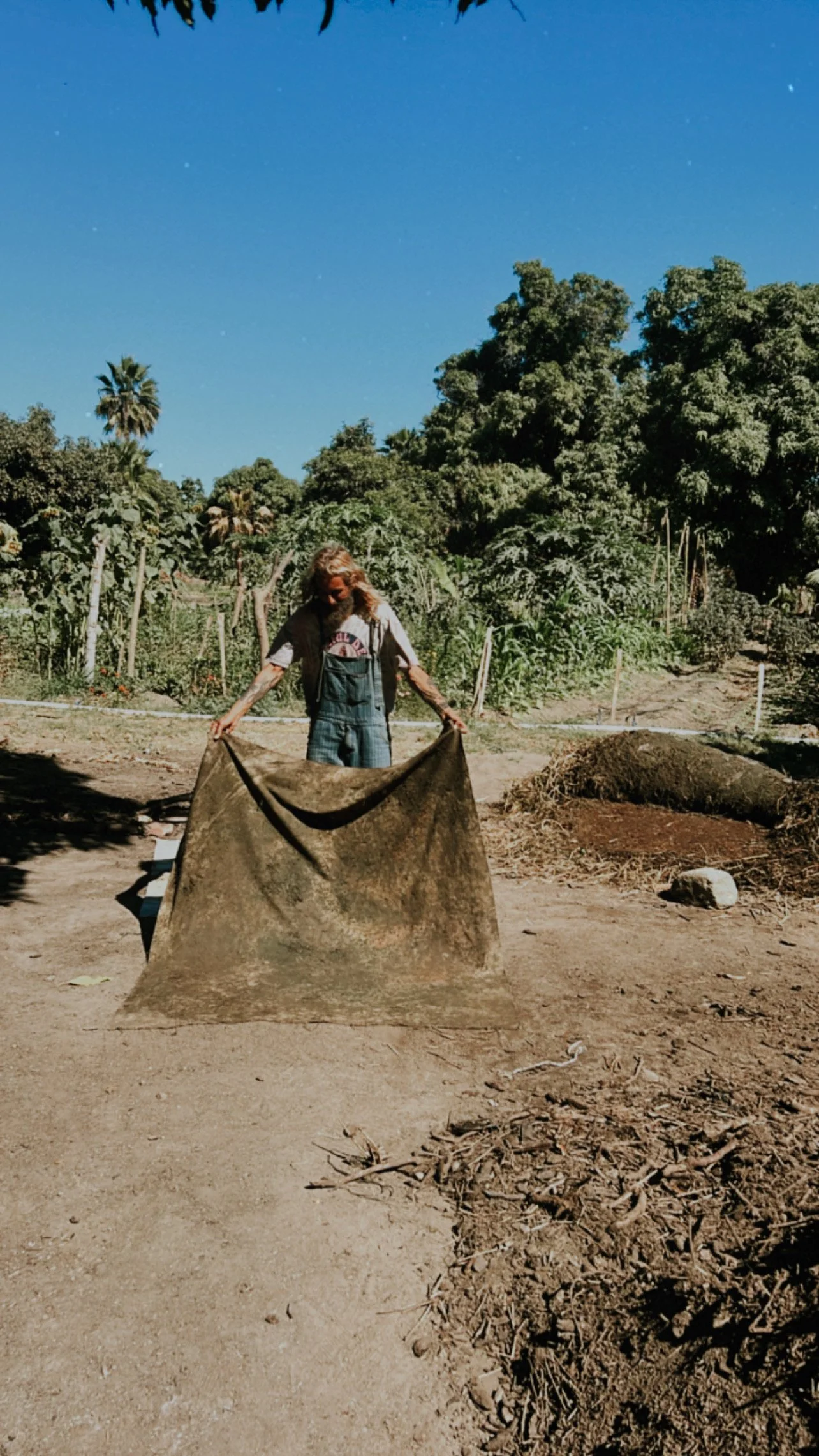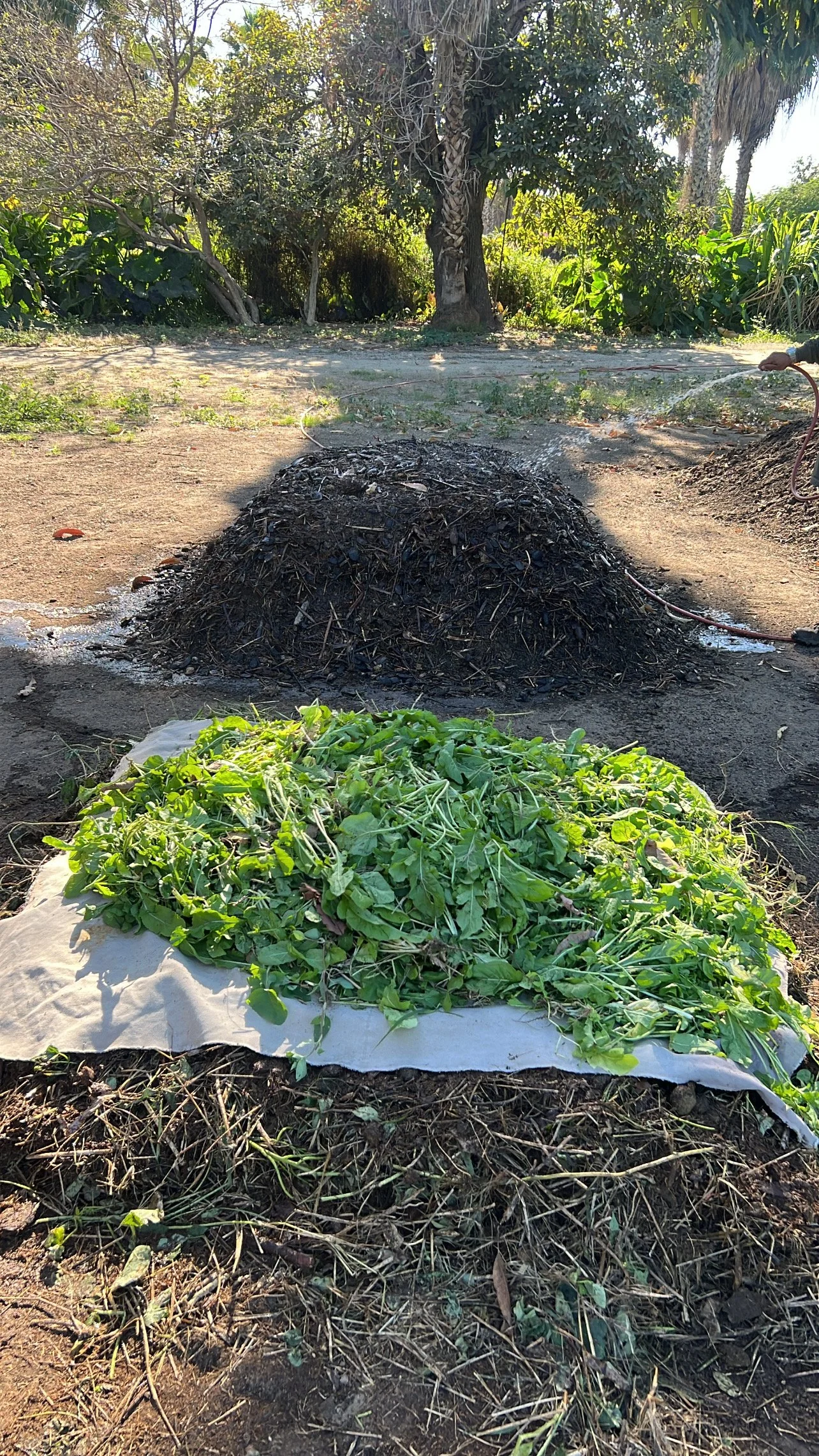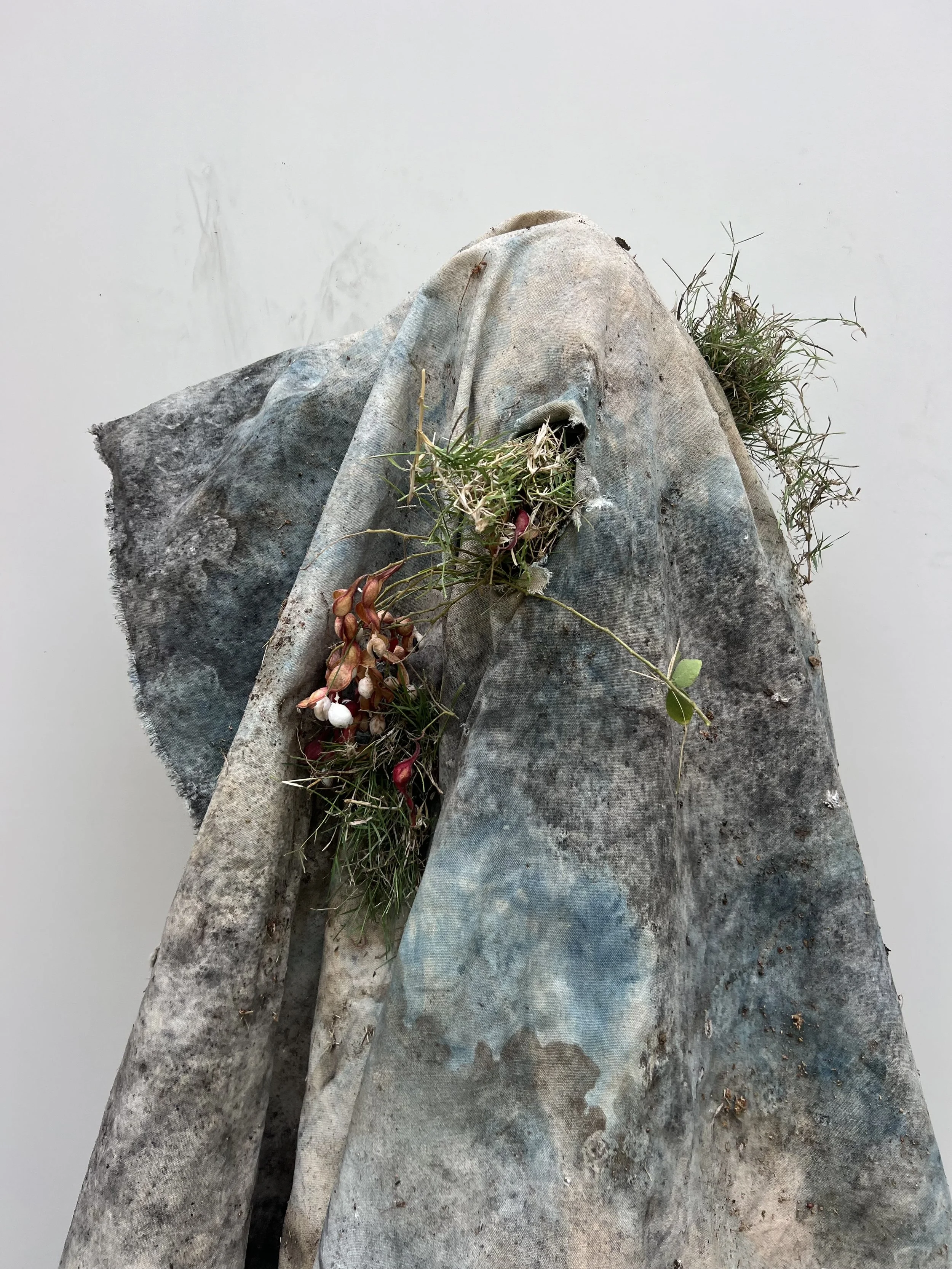Ecological Surrender
Ecological Surrender represents my approach to ART and LIFE. This concept merges my personal ethos with my artistic practice, aiming to foster a deeper awareness of our environmental impact. By naming it Ecological Surrender, I emphasize the importance of surrendering to natural processes and rhythms, both in the creation of art and in our daily lives. This movement seeks to inspire others to engage with nature in a more conscious and harmonious way, encouraging a shift towards greater environmental mindfulness and appreciation emerges from the intersection of entropy, spiritual ecology, and the philosophies of Taoism and Masanobu Fukuoka natural farming. This movement relinquishes the traditional notions of control and precision in the creative process, embracing instead the unpredictable, transformative forces of nature. It encourages artists to surrender to the organic flow of creation, allowing the work to evolve through natural processes that may seem chaotic or ambiguous at first but, over time, reveal a deeper and more profound meaning.
Entropy in the Creative Act
At the heart of Ecological Surrender lies the idea of entropy—the natural progression from order to disorder, from structure to decay. In traditional art practices, artists often begin with a clear intention, exerting their will upon the material to produce a defined outcome. Ecological Surrender challenges this paradigm by embracing the uncertainty of the creative act. The artist does not start with a rigid concept or agenda but instead allows the work to emerge organically, trusting in the natural forces that shape the world, from the smallest mycelial networks to the vast, untamed oceans.
In this movement, the artist's role is more akin to that of a gardener than a craftsman. As Fukuoka taught in his natural farming methods, by doing less and interfering minimally, one can achieve results that are richer and more aligned with the natural order. Similarly, in Ecological Surrender, the artist sets the stage, provides the "artistic compost," and then steps back to let nature—time, decay, growth—do the rest. The initial idea may be unclear, even to the artist, but through this process of surrender, something greater is allowed to emerge.
The Eco Flow State
A critical component of this movement is what I call Eco Flow—a state of connection with something larger than oneself, the creative forces of nature. This concept draws upon Rudolf Steiner’s biodynamic principles, where the cycles of nature, the cosmos, and the elements work in harmony to foster growth. In Eco Flow, the artist becomes attuned to these forces, entering a state of receptivity rather than dominance. The act of creation is no longer about imposing will, but about being in dialogue with the natural world.
In our modern society, which is fixated on control, efficiency, and predefined outcomes, Ecological Surrender offers a radical departure. It mirrors the practice of meditation, where one releases expectations and simply allows things to unfold. This willingness to "not push the river but let it flow" opens the door to unexpected discoveries, often leading to more profound and meaningful work than what the artist initially conceived.
Art as Ritual and Transformation
Ecological Surrender transforms the creative process into a form of ritual. By yielding to the unpredictable forces of the natural world—whether it be the decay brought by fungi, the erosion caused by wind, or the reshaping of materials through water and time—art becomes a reflection of the rhythms and cycles of life itself. This surrender allows for a deeper connection to the earth, fostering a sense of reverence and humility toward the unseen forces that shape our existence.
The movement also raises profound questions about humanity’s relationship with nature. In a world where we constantly strive to dominate and exploit the environment, Ecological Surrender asks us to reconsider our role as co-creators with the earth rather than its masters. By allowing natural processes to guide the work, the artist invites the viewer to reflect on their own relationship with the forces of creation and destruction, growth and decay.
Negative Capability and the Acceptance of Mystery
In many ways, this movement is aligned with John Keats’ concept of Negative Capability—the ability to embrace doubt, uncertainty, and unanswered questions without forcing a resolution. The artist in Ecological Surrender must be comfortable working within the unknown, trusting that meaning will emerge not through willful intention, but through the unfolding of natural processes. This future-blind approach challenges the artist to tolerate ambiguity, to allow the work to become what it is meant to be, rather than what the artist desires it to be.
As in nature, where hurricanes reshape coastlines and fungi decompose the forest floor, the forces that drive Ecological Surrender are beyond human control. The result is a form of art that is alive, ever-changing, and deeply connected to the rhythms of the planet. It offers a reminder that, in life as in art, control is often an illusion, and the most profound beauty emerges when we relinquish the need for certainty and surrender to the flow of existence.
The Genesis of Ecological Surrender
I call this philosophy of life and art Ecological Surrender—a concept that was born during the years I lived in my van, traveling and residing in different places. The uncertainty of my nomadic lifestyle became the midwife for this idea. My relationship with the unknown deepened; without a fixed studio, nature itself became my workspace. I didn’t always know where I would sleep each night, which created a different understanding of nature's rhythms—like the circadian cycles of rising and resting with the sun. My artistic materials were whatever I could find in my environment, forcing me to surrender to the resources and conditions available.
A crucial turning point in developing Ecological Surrender was my participation in plant medicine ceremonies, a practice deeply rooted in Mexican culture. In these ceremonies, one enters realms where control is impossible—an intentional crucifixion of the ego. The only way to navigate and gain insight in these altered states was through total surrender, allowing the plant or mushroom to guide the experience. These ceremonies transformed my sense of self and solidified my desire to share that transformation.
Ecological Surrender thus became not only a method of creating art but also a way of life, one that reflects my insights, ethos, and process. At times, society made me doubt my approach to both living and creating. I felt that the world, in its obsession with control, was fostering both a mental health crisis and an environmental catastrophe. As Krishnamurtionce said, "It is no measure of health to be well-adjusted to a profoundly sick society." This thought resonated with me deeply, reinforcing my belief that we must align ourselves with the flow of nature, taking agency in that entropic dance. By embracing this flow, we can create art that reflects our relationship with the environment, while also fostering a deeper, more natural sense of existence.
My practice of meditation, particularly the Direct Approach taught by Stephan Bodian, also influences this movement. His method of allowing everything to be as it is, without striving to reach a particular state, mirrors the ethos of Ecological Surrender—an exploration of the present moment, free from the pressure of arriving somewhere specific. This mindset not only fuels my art but informs the way I navigate life itself.
Art as Ritual, Transformation, and Quantum Inspiration
Ecological Surrender transforms the creative process into a form of ritual. By yielding to the unpredictable forces of the natural world—whether it be the decay brought by fungi, the erosion caused by wind, or the reshaping of materials through water and time—art becomes a reflection of the rhythms and cycles of life itself. This surrender allows for a deeper connection to the earth, fostering a sense of reverence and humility toward the unseen forces that shape our existence.
Additionally, this movement draws inspiration from the philosophical ideas of David Bohm, particularly his concepts of implicate order and explicate order, which describe the underlying structure of reality as a dynamic process rather than a static entity. Bohm’s view posits that the world we perceive is only a surface-level expression (the explicate order), while the deeper, interconnected realities (the implicate order) operate beneath the surface, guiding and shaping what we experience. In Ecological Surrender, this reflects the idea that what we control in the artistic process is but a fragment of the deeper, mysterious forces at play.
The notion that there is perhaps "more sense in our nonsense, and more nonsense in our 'sense' than we would care to believe" further emphasizes the surrender to the unknown in the creative act. It challenges the traditional dichotomy of chaos and order, embracing both as necessary parts of the artistic process. What may appear nonsensical or chaotic during creation often holds a deeper, hidden order that only reveals itself over time, just as the artist, in surrendering control, allows a greater intelligence to guide the unfolding of the work.
